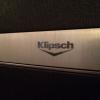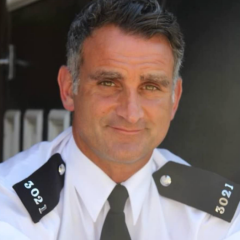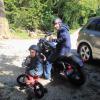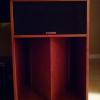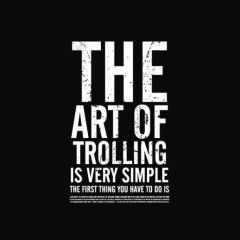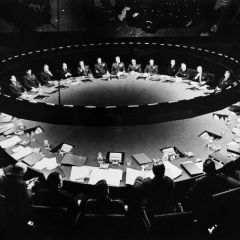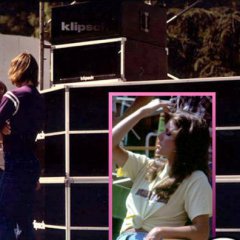Leaderboard
Popular Content
Showing content with the highest reputation on 01/27/15 in all areas
-
I would like to give a big Thank you to a member . I picked up a new amp , mcintosh ma2275 tube amp . I was having a few problems that I could not figure out . So I Emailed , Talked on the phone , text back and forth several times . Now I love my new amp and that is a good thing . So I give Thanks to you Justin Weber , You didn`t have to help But you did. For that I thank you Again . It`s the members that make this a great place . Tom7 points
-
5 points
-
Good snow storm morning my friends! All roads still closed, and I just took this with a strong gust of winds blowing though the yard. More storm to come according to the local live TV broadcast from our NBC affiliate station... Funny thing is, with all the wind, the snow is just blowing around and not sticking on much... 15 degrees so it's cold, cozy 72 in the house and about to pour some fresh brew.. more photos to follow (0:5 points
-
Can't sleep, watching the nor'easter news. Stay home my friends.5 points
-
My favorite gun is my "Cowboy Gun". It's an American Made Henry Big Boy .44 Mag. My son scarfed it last time he was in from college. It is a favorite of my sons as well. I also love my Beretta Xtrema2 12 Guage. I was shopping for my next shotgun and ran across this video. There was no doubt in my mind when I saw it. I had to have it! This guy is ridiculous!4 points
-
Even though I am from West Virginia, a big deer hunting state, I don't hunt. I'm not a very good shot either, so that makes me more of a collector. My favorite gun is a 1908 Colt 380 hammerless. It is rather small, has a 7 round clip, but has a perfect fit and feel in my hand, the balance is just great. It was owned by my father's grandfather. One of my sons will get it someday. (stock photo, but my gun looks exactly like this one, with the small round Colt logo on the grip)4 points
-
Me too. We should have 75 today for a high. I'll probably go for a nice walk after I eat lunch.4 points
-
4 points
-
The worst part of the storm missed us. Only three inches so far. 12 degrees. Another day in paradise. God I love winter!4 points
-
Well I have been waking up a bit earlier, Thanks for the coffee Steve.4 points
-
4 points
-
Very nice. Classy, just like the old man. I sure miss his presence around here.4 points
-
[Edit 10 June 2017: Tutorials for demastering your music tracks using the method described in this thread follow: Demastering Part 1 (What and Why).pdf Demastering Part 2 (How To).pdf Part 3 (Advanced Topics) will follow shortly.] Recently I bought a new/old stock (NOS) CD from Amazon, originally recorded on analog tape in 1976, released on vinyl then much later re-released on CD. My particular CD dates from 1990, just before the wide distribution and use in 1991 of multi-band music compressors, and with it the Loudness War on popular music. When this particular CD arrived it was basically unlistenable, i.e., it sounded exceptionally strident and devoid of bass, but retained its music dynamics. At this point, I decided to investigate the reasons why it sounded so bad. My tool of choice: the freeware tool Audacity. What is the Issue? When looking at the frequency spectrum averaged across most of this music track, it's easy to see a few characteristics: The decreasing slope with frequency across its full spectrum (more on the reason for this later) Frequency spikes of narrow width across certain areas of the spectrum A slight "hump" or rounded spectrum from 1000 Hz to about 13 kHz A steep roll-off of low frequencies below about 80 Hz Some immediate questions arise: Is the roll-off toward higher frequencies normal (i.e., is it there in the original master recording before any changes are made to it)? Are the frequency spikes normal? Is the frequency hump from 1-10kHz normal? Is the much steeper roll-off of low frequencies below 80 Hz normal? I found answers to these questions: Roll-off of frequencies from low to high is normal, since the frequencies themselves double in their inherent energy for each increase of an octave - i.e., a -5.5 dB/octave is present in all typical recordings (note: don't confuse this effect with the Fletcher-Munson curves of equal perceived loudness). In fact, any departures in the averaged frequency spectrum from this linearly decreasing amplitude behavior with logarithmic frequency should signal the need for further investigation. The frequency spikes typically correspond to certain types of musical instruments that do not change frequency each time they are played (i.e., piano, percussion, and especially electronic instruments, etc.). These spikes are almost always generated by the musicians themselves, not the recording/mixing/mastering processes. The frequency hump from 1-10 kHz isn't really typical of most live music. There is typically a straight line of deceasing slope tendency for averaged unamplified/unmixed music if the musicians onstage playing together get to adjust their loudness of the various music parts (assuming a multiplicity of instruments including percussion/drums, double bass, and treble instrumentation, like wind and string instruments of the band or orchestra, and voices. (This is probably the most useful observation that I found.) The roll-off in bass below 80 Hz isn't normal or desirable, unless perhaps you don't actually have to listen to the reproduced music, but only to get the music impressed onto phonograph records or CDs without having to decrease its overall loudness/gain to accommodate the very large bass/kick drum transients that are actually there in real, live music. To check the last statement to assure myself that what my ears were telling me was correct, I looked up the frequency range of electric bass guitars. Here is what I found: Note that the "B string" is for 5-string electric basses, and the "C String" for 6-string electric basses. The double bass ("string bass") nowadays has an 31 Hz open "C" string" with fingerboard extension for the lowest frequency string. Most jazz bass players nowadays have begun using 5- and 6-string basses, and therefore will have fundamental frequencies in the 30-40 Hz range. I find that most SACD recordings of jazz bass players, recorded on or after the year 2000 using DSD-only recording will have these frequencies intact on the recording, which is a significant addition to the listening experience. I also checked on the frequency spectrum of kick drums. Here is what I found for the time/frequency graph of a typical kick drum: As you can clearly see, just based on investigation of these two instrument types, the fundamental frequencies of the recorded music to accurately reproduce instrumental performance is more than a octave lower than the 80 Hz roll-off found in the example recording. On What Recordings Is This an Issue? Good questions immediately arise from the information above: why would a mixing or mastering engineer attenuate and thereby remove these frequencies from our recordings, especially in light of the information that 25% of the importance of loudspeaker performance in subjective ratings is due to its bass performance (notably bass performance well below 80 Hz)? (See Floyd Toole's book, pgs. 197 and pgs. 463-464) Is this why many CD releases made before 1991 (and I suspect many phonograph records) sound strident and bass shy when played back on high fidelity sound reproduction systems--like the ones that many forum members own? How many recordings, and of what date released and type are affected by this "mastering feature"? I've found many, many more examples of this type of mastering frequency response profile, especially from pre-1991 recordings. Most of these recordings cut the bass below 100 Hz, not 80 Hz. This is the "missing octave". For pipe organ performance, fundamental frequencies as low as 17 Hz are typical for many large instruments with 32' fundamental stops. Why Are These Recordings Missing The Bottom Octave? Isn't The Bass Originally There During Recordings? Why Would Mastering Engineers Remove Bass Below 100 Hz? This is where the story gets interesting. I've found through my now-many remasterings of different FLAC and WAV files with this characteristic is that the bass frequencies are inherently high in amplitude relative to all other frequencies (remember the decreasing slope of a typical music track, above). This means that any mixing or mastering engineer worried about compressing tracks for the sake of maintaining a "loud" sounding mix, will HAVE TO roll off the amplitude of bass track, either by using equalization filters to cut the output extremely steeply below 100 Hz, or use equalization roll-off and a multi-band compressor that further compresses the bass track disproportionately to the higher frequencies on the compressed recordings... Beginning to get the picture? If you're feeling as though you can't trust a mastering engineer as far as you can throw him/her, you've got the message. Loudness War techniques have been in existence for many years now. Why would someone buy loudspeakers that can reproduce sub-80 Hz music content with great fidelity, but then turn around and find that their music has been intentionally blanked out for 3 of the 5 strings of an electric bass or the most energetic octaves of a kick drum (in fact rendering the drums on the music track for tom-toms and kick drums indistinguishable)? If you hear bass on these recordings, what you are hearing is actually the second harmonic of the bass player or the upper harmonics of the kick drum - not the fundamental frequencies. It seems insane, doesn't it? Like a huge betrayal of trust. Trust me, you can hear that loss of an octave (or more) and it's not very nice to listen to, IMHE. Can Anything be Done to Recover the Missing Octave(s)? Fortunately, the answer to this question is "yes", if the recording that you have hasn't been compressed using a multi-band compressor, like the Loudness War tracks made from 1991 to the present typically have. So here's the situation: if you have a CD made before 1991 (or certain other CDs made after 1991 but not using compression techniques--which I'm finding are increasingly rare, but they do exist)--excellent results can be had by re-equalizing your CD tracks. How much re-equalization? See the below Audacity filter that I use as the initial starting curve for these bass-deficient tracks (followed immediately with the "Normalize" filter in the Effects menu to re-level the output before saving the new equalized track). Note decreasing gain above 100 Hz, which I find is needed for most (but not all) tracks. I also find that there are favorite EQ curves used by the various artists that seem to run from album to album: And the "after equalization" curve: The "after EQ" track sounds a LOT better now. Highly recommended. Chris3 points
-
In 1974 there as a local department store (pre walt mark) going out of business. Their going-out-of-business advertising had gone on for several weeks before I found the time to stop by. Fortunately they still had some golf balls I wanted so I bought 10 dozen. While there I saw that they still had a few long guns left. I bought a Winchester 94 30-30 for $60. Later I bought a low powered scope for the rifle and used it for fun at the range. One day my brother called and asked if I wanted to go deer hunting the next day with a friend of his visiting from out of state. The terrain in the area we were going to hunt was sage fields and/or thick scrubby pine so I carried the Winchester. When we got there and were getting ready to hunt the two turkeys I was with started laughing at my $60 rifle, calling it 'the pea shooter'. The two of them had nice rifles, Weatherby as I remember. I laughed at them as they were removing their rifles from soft cases and then from additional cloth wrappings around the rifles inside the soft cases. Pretty rifles they were. We hunted. No luck. I got back to the truck before the others and put my gun away. We were parked on top of a hill and there was an illegal dump site down in an adjacent valley about 75 yards away which I had not noticed before hearing gun shots. I walked over and saw they were kicking up Weatherby dirt/dust clouds around several soda cans. After about 20 rounds I said it looked like I was going to have to get the 'pea shooter' out. They laughed. I got the pea shooter and loaded one cartridge. Kicked a cola can about 20 feet straight up in the air. They never mentioned my $60 Winchester again. That was 40 years ago. I still have the pea shooter today. Keith3 points
-
Shot about everything the Army has @ one time, or another... My favorite: Ma Duece Caliber .50 M2 Browning Machine Gun with Flash Hider. The Commander's Weapon Station from the M1A1 Abrams is especially effective, the Mount, T&E mechanism & site sweet.3 points
-
The advantage of setting ALL my speakers to LARGE: Sounds Much Better, is too great for me to ignore... But, this is not for everyone; try it both ways for a week, or 10 days.3 points
-
i put a new pot on before signing off for the night -- it should be ready by the time you all start arriving in the morning. Enjoy.3 points
-
Hi Gary -- a bit wet as it started to rain late this afternoon. Figures--i just had my car washed yesterday. Went to physical therapy for my back/legs, grabbed some pasta & salad on way home. Will pick up the guitar in a few minutes.3 points
-
2 points
-
Also all you old school .22 fans might like this, my grandfather passed on one of those High Standard .22 revolvers from Sears, got it new for like $40. 9 shot, can shoot .22 longs, shorts, and magnums.2 points
-
I recently heard it. And while I think it's good, a majority of the money is for the finish itself. Your rsw-15 would hold it's own I'm betting and I'm sure the PB-13 ultra would beat it, I've owned a couple of them. They are beast subs.2 points
-
Everyone knows about compression and limiting during the mastering process of CD production, but few are aware of the spectral shaping that is applied. It's the combination of these processes, along with others, that allow for the uberloud discs that are being made these days. http://crazymastering.com/masteringexplanation.html2 points
-
T2K, about your original question, some have suggested the S&W MP15-22. That is a great choice. I have one and they are incredibly fun to shoot, but take lots of ammo with you. My son shot 220 on the Appleseed AQT with one. He has a keen eye and a steady hand, though. My favorite semi-auto is a built 10-22 with a revolution extreme stock, Kidd trigger, Green Mountain 20" fluted barrel, and a Nikon 4-12x40 scope. It is ridiculously accurate out to 100 yards and everyone wants to shoot it.2 points
-
When you are dealing with add/subtract/multiply/divide/shift operations on a string of numbers going by, it's easy to see that digital domain equalization filters are perfectly reversible, virtually infinitely adjustable, obey linear superposition (meaning that you can use digital filters in successive steps or types--or all at once with one filter with no difference in quality of output), and that noise isn't a factor at all in the filtering. Phase is also controllable (unlike analog filtering) by using digital FIR filters. Many people don't pick up on this and think of digital equalizers as if they have the same problems as the old analog equalizers: they don't. Conversion back to analog at the output is basically the only place where attention to detail needs to be made--and this is at signal levels that don't require tubes or other esoteric amplification hardware, just a reasonably good DAC--which are found virtually everywhere nowadays. Chris2 points
-
Morning all, we got a dusting here in S. Maryland, schools are closed. Joey and Jake are happy. Up till 4 am poking around looking for drivers for possible convert to linux Thinking that is on hold as I dont want to change my listening setup I need to find an older laptop and switch it over and see if I can get everything to work on it, maybe I can sneak Linux on the wifes2 points
-
Thankfully this deal is not in Miami. Alex2 points
-
Havent done any rifle shooting, but I enjoy just about ever pistol I shoot. My favorite shotgun is my Browning Citori Special Sporting Clays Edition. It's a nice heavy target shooter that absorbs recoil wonderfully and allows me to shoot all day without feeling it. Super accurate, and for being 22 years old it's still pretty to look at, even with it's nicks and bruises.2 points
-
I am currently to ad an auto for HD and general all around fun... I am thinking either a SW 1911 ported or a new M&P .40 Ported... but I hear a lot of bad things about the M&P trigger. anyone have experience with them?2 points
-
EQ has come a long way in the last decade. In my experience EQing a digital file in the digital realm before it is converted to analog can achieve very good results. I would agree with the disdain for old analog EQ units.2 points
-
2 points
-
2 points
-
A fresh pot sounds good, Boat R&D ongoing, may pull an all nighter at this point.2 points
-
The 3 deadly white powders in our diet are sugar-salt-flour any/thing you/try to eat that has this as an ingredient you will suffer...... I’d add Heroin to that list. Yeah, i know -- shut up Steve.2 points
-
Ok, understood. Yes Mach One, we have an Asian friend, and she always says to stay away from WHITE foods (0: But how can she not eat rice? As a near vegetarian here, I do up various rice dishes.......hmmmmmm Well, tonight it's cod cakes from Whole Foods and a veggie side dish of fresh zucchini, portabella mushrooms etc.... Off I go with wine glass in hand (0:2 points
-
Guys, I was simply acting at the request to thank YOU guys by the Boxx family. It was, and remains, my pleasure to serve this group any way I can for the reasons expressed in that card and for the well over a decade of excellent comradeship. Thank YOU! Now, come to HOPE and meet them, and the rest of us misfits in April. Dave2 points
-
2 points
-
Hey there friends...........Well, I was surprised with all the likes for the coffee/donut photo. Actually, Sportster, there are NO transfats in their recipe these days, yeah, there is fat, but the glazed have the LEAST amount of ingredients, and probably safer then the other offerings. As far as the coffee, well, I only get the DARK roast which it took YEARS to finally answer the call of patrons and make it available OTHER THEN ICED !! They have been selling it by the bag for a long time. So, I am happy that it is now available hot... yes, it isn't boutique or Starbucks by any means, but in a pinch.... Speaking of that, there are some interesting advertisements where Dunkin is basically competing with Starbucks. While up in Maine a few months back, I took a cool photo of a Starbucks AND D&D's right next to each other !! I went across the street and both stores fill the image nicely There is even a T shirt for sale in there shops, it reads, "Friends don't let friends drink Starbucks!" Ok on the storm, it is all the rage on TV right now...... My buddy Pezz in RI and I are chatting via video Skype right now as I type, we both have tomorrow off as mentioned. it is just light and wispy right now, light winds. Thanks to you all for your concerns for us here in New England, we appreciate it... Ok, got to go start dinner and being looking out windows (in the dark )... ..gw2 points
-
Thanks for posting this for us Dave! As for the Boxx Family, The pleasure was all of ours and I am sure that all of us in attendance at Hope are looking forward to meeting your family!! Roger2 points
-
Double tap, 20 yards, mini IPSC target which is barely bigger than the size of a basketball. The taped up holes are how everybody else spews them out. I need a #2 phillips head screwdriver to punch two holes that close together!1 point
-
1 point
-
To expand on the question "On What Type of CDs is this Found?", I first used this process on several noted CDs that I never listen to. Some results were initially spectacular. Then I started down the line with other artists from the 1970-80s and found a high percentage of these CDs also having the same disease including: Doobie Brothers, early Steely Dan, Pat Benatar, Dave Brubeck, Tears for Fears, The Doors, Grand Funk, Mannheim Steamroller, Jackson Browne, Rolling Stones, early Eagles, The Who (the worst I've attempted to fix, in point of fact), Linda Ronstadt Billy Cobham Stacey Kent Diana Krall The Alan Parsons Project etc., etc. When I look at artists from this time period, virtually all of them that haven't already been classified as "audiophile quality" (...do you see the association here?...) are usually sporting these properties and which respond significantly to this treatment. I've got many more days of editing ahead of me--perhaps weeks months. [edited 28 Aug. 2015] The best results--most startling, that is--are CDs of bass players, such as Marcus Miller (a few tracks/albums), Brian Bromberg (wow...big, big difference on his Wood series), Esperanza Spalding (ditto), and some jazz artists, notably early Jean-Luc Ponty, etc. I'm just scratching the surface, that even though I've been devoting more than half-days to this for two weeks. Amazing...isn't it? Chris1 point
-
1 point
-
Since you mentioned them... Both the RS-42II & 52II are available for sale directly from the Klipsch.com website, with a current 20% off promotion code. I don't have any experience with them, so I can't say how well they may or may not integrate with your current setup. But since Klipsch is clearing them out with a decent discount, it might be worthwhile. Another option to consider, though more difficult to do, is to find 2 or 3 more KLF-C7's and use them as surrounds and/or a center back channel. Having owned a C7 as a center channel with my KLF-20's, they'd be a perfect match with your current speakers and are more than capable of surround duty... Unless you prefer the dipole/splayed configuration of the 42's and 52's.1 point
-
Thank you for all of the input. With all of your help I did solve the auto on issue. After digging in to the setting for the sub. I found that after the auto calibration the sub output was at -10 db. Which wasn't enough to wake up the sub. My settings are the usually THX type settings. Size and crossover settings. I will need to tweak the system and re-calibrate it, but now I know why it the sub would stay off. I did try and calibrate the sub both the "Sony" way and the "Klipsch" way noted in their owners manual and neither are perfect. I'll need to work on a happy medium. Sony's setup is turn the gain and cut off to the max level on both and let the system adjust as needed. That's where the -10 db came from. Klipsch says to let the system handle most of the setting making sure the crossover settings in the A/V unit are set to the normal crossover settings and adjusting the gain in the A/V unit to match the speaker levels. Do any of you guys out there have a better way to perform a good calibration? I'm currently running my original R-3 speakers from 1999. RF-3, RC-3, and RS-3's. They have been good to me, but I have ordered a full set of the new RP speakers. RP-280F's, RP-450C, and RP-250s's. It will be a 7.2 setup with 2 of the R-112SW's. I went with 2 12's vs the 1 15 inch sub. I always run 2 subs in my setups. So with that any input from you guys would be great. Thanks again.1 point
-
I agree with Joe ! There are many features that come in handy as well. It can be used as a crossover, an equalizer, room correction , and so much more . I dont really need the master license but if I can figure out swinging it I think I will get it as I am seriously considering Linux1 point
-
1 point
-
No need to be left out. Just get yourself a few of these. They come in many flavors (colors)! LOL not sure I like the implications1 point
-
Hello TOPALOGLOU and welcome to the forum! Also, Hello too you parlophone1 and boomer9911. To make this as simple as possible, Paul Wilbur Klipsch said there is no such thing as High Fidelity. Something either has fidelity or it does not... Does this make sense to you??? Therefore, your speaker wire and interconnects either have fidelity or they do not... Are you with me so far?? You cannot make a system sound better than the signal sent to it, ie; we cannot increase the fidelity of the signal, only deteriorate or add to the signal that which was not there before. Therefore, as long as you are running wire of sufficient gauge for the length needed for the run, we cannot improve upon this signal. High end speaker wires and interconnects often use capacitance in line wich can soften the sound and some may find the difference pleasing to the ear, make no mistake, this change in the signal path is NOT fidelity!!! I own over $4,000 in interconnects of one type from a company and I have the same brand two models cheaper and the cheaper interconnects sound better! I also have silver plated 10 Guage stranded pure copper wire with gold plated spade connectors and it sounds no better on TSCMs, Klipschorns or LaScalas than 14 Gauge stranded pure copper zip cord type wire. Spend your money on music or upgrading something else in your system, patch cords and speaker wires are myths that someone can make a lot of profit off of you by pulling a fast one on you. Roger Hi Roger and thanks, been away for awhile. Thank you for the simple English explanation made quite clear and makes perfect sense in all honesty...lol... I've been running Kimber cable 8TC up front and Monster 12 gauge to the rear Hersey's for the longest time. I guess I was sold on the Kimber gimmick of the thick and thin wires, thin being for higher frequency and thick for the lower frequency, and truth, they sounded the same when I used the rear Monster 12 gauge off the Khorns up front. I will be running a 2 channel setup soon with my LaScala's as I just purchased a vintage Marantz 2275 Receiver along with a Rega RP40 TT and just need the speaker wire, which I did order this morning. From reading from my fellow Klipschers I have decided to purchase the red\black 10 gauge "zip cord" from Powerwerx in the states at 25 ft for $35 plus shipping for that run to the LaScala's. I'm looking forward to the comparison if any.....Cheers.....1 point
-
I think attitudes would improve if everyone in this thread spent more time in the "right this minute" thread sharing their library, learning about new music, and general BS'ing. Some of you ONLY interact on technical subjects, of which you are no doubt passionate about, but never take the chance to let your hair down and find common ground in the music.1 point
-
Right before xmas I picked up a used set of KG 2.5s for $50 and last summer a set of KG 1.5s for $30. They absolutely rock in my garage. Plus with the 2.5 you can lay them down and use brackets, plus they would fit in the 13" you have. I highly recommend these for that purpose. I make beer in my garage and spend some real quality time out there...1 point







